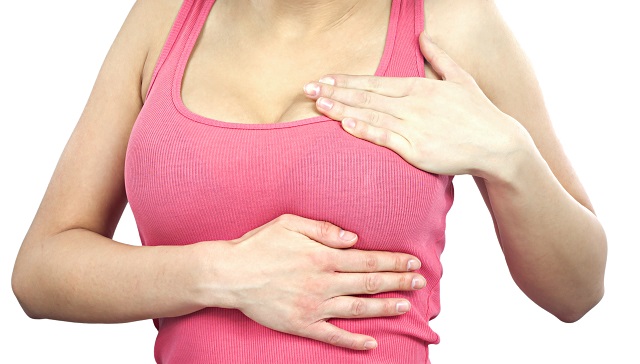According to Breast Cancer Ireland, breast cancer currently affects 1 in 9 women in Ireland, with 2,800 new cases being diagnosed annually. With statistics as harrowing as these, it has become more important than ever for women make routine checks of their breasts in order to detect potentially cancerous symptoms. If you want to find out what to spot during a DIY breast check, read on!
What to feel for
The first step in a DIY breast check is to get comfortable and be prepared to get a little touchy feely. Good places to carry out the exam is on top of your bed or in a warm soapy shower.
When you’re comfortable, extend your right arm and using three fingers on your left hand, gently pad your way across the skin in circular motions from your armpit across the entire breast using the flat surface of the three fingers.
Ensure to use varying pressures across the area in order to fully examine the different layers of skin and don’t remove your fingers from the skin’s surface until you have completed the exam. Take your time to get used to how the tissue of your breast feels and try to determine if you can feel any noticeable firm lumps or knots in the examination area. Repeat with the other breast.
What to look for
What you see during a breast exam can be equally as important as what you feel, so it’s time to step in front of the mirror. It is crucial that you check for any unusual changes in the size or shape of your breasts and nipples during a check. While most women have a right and left breast of different sizes and shape, this is referring to any sudden or dramatic change.
Abnormal dimpling of the skin around the breast area can also be an indication that something is wrong. Along with the breast itself, it’s important to pay special attention to the nipple area. Unusual discharge from the nipple (which may be streaked with blood) could be an indication of breast cancer, along with a rash or a sudden sunken appearance of the nipple.
A quick a routine breast check such as this one should be performed once a month, preferably after your menstrual cycle as there is less likely to be swelling around the breast tissue. Should you find a lump, don’t worry, it doesn’t necessarily mean bad news. Much of the time, breast lumps are benign but they are important to get checked out. If you find a lump, visit your doctor.
To learn more about how to potentially reduce your risk of developing breast cancer click here.









